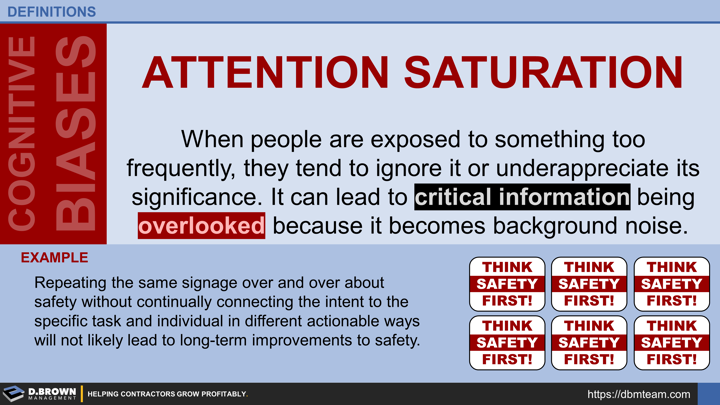EXAMPLE
Repeating the same safety signage without consistently linking its purpose to specific tasks and individuals in meaningful, actionable ways is unlikely to result in long-term safety improvements.
Signage is only a small part of developing a true culture of safety, supported by management systems.
The same could be said for repeatedly seeing the same information on job cost or other financial reports.
When this happens over and over, it can lead to a culture where deviations from correct behavior or rules become culturally normalized.
LEARN MORE
Attention Saturation is closely related to "Normalization of Deviance," which is described very well by astronaut Mike Mullane talking about the Challenger and Columbia disasters.
Management's role is to take general principles, like "Think Safety First!", and connect them to the specific tasks and contexts relevant to each person they are responsible for. Sometimes, this involves telling a story. Other times, it may require training on a specific task or tool, coaching while observing, or asking questions to validate how others are thinking.
This is the role, responsibility, and skill of good managers.

